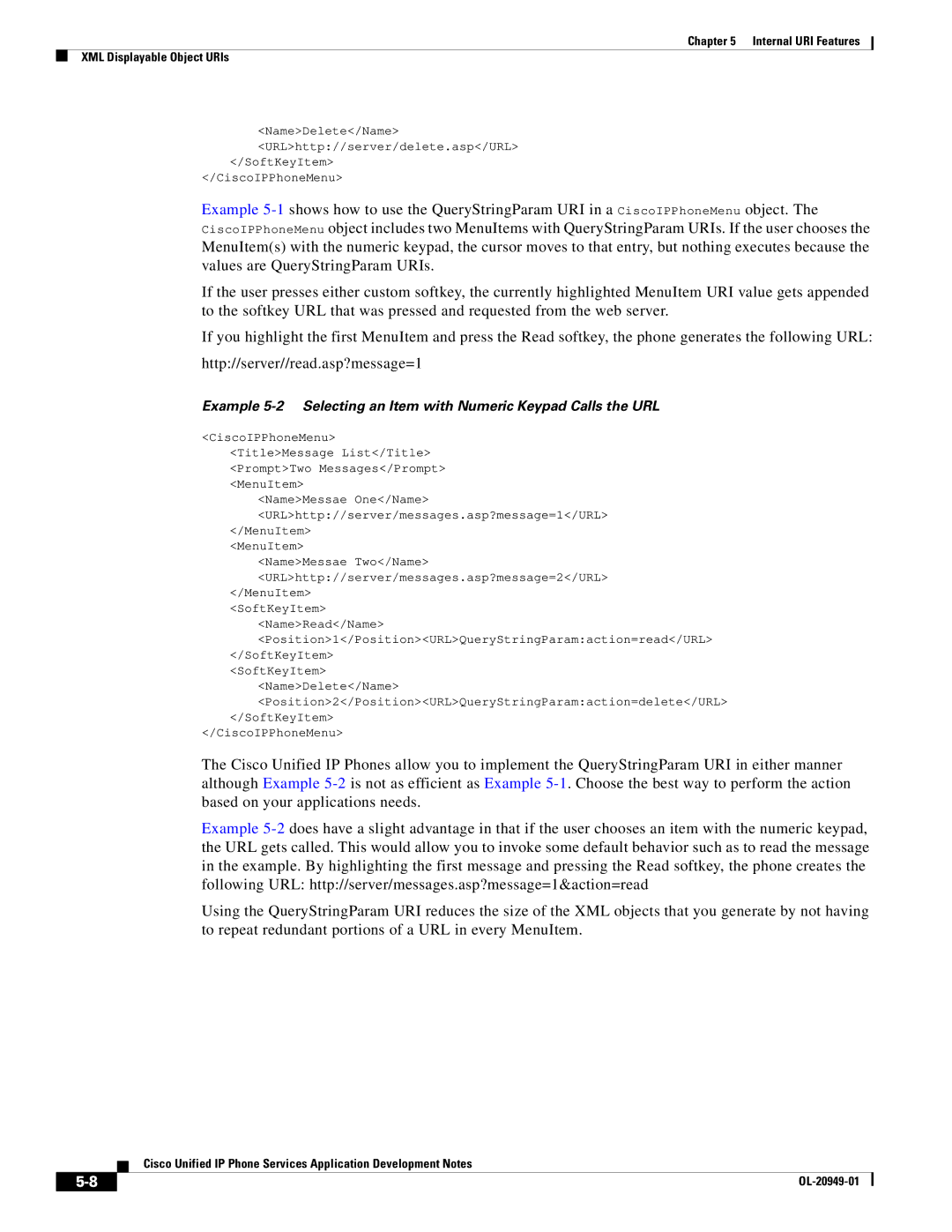
Chapter 5 Internal URI Features
XML Displayable Object URIs
<Name>Delete</Name>
<URL>http://server/delete.asp</URL>
</SoftKeyItem>
</CiscoIPPhoneMenu>
Example
If the user presses either custom softkey, the currently highlighted MenuItem URI value gets appended to the softkey URL that was pressed and requested from the web server.
If you highlight the first MenuItem and press the Read softkey, the phone generates the following URL:
http://server//read.asp?message=1
Example
<CiscoIPPhoneMenu> <Title>Message List</Title> <Prompt>Two Messages</Prompt> <MenuItem>
<Name>Messae One</Name> <URL>http://server/messages.asp?message=1</URL>
</MenuItem>
<MenuItem>
<Name>Messae Two</Name> <URL>http://server/messages.asp?message=2</URL>
</MenuItem>
<SoftKeyItem>
<Name>Read</Name>
<Position>1</Position><URL>QueryStringParam:action=read</URL>
</SoftKeyItem>
<SoftKeyItem>
<Name>Delete</Name>
<Position>2</Position><URL>QueryStringParam:action=delete</URL>
</SoftKeyItem>
</CiscoIPPhoneMenu>
The Cisco Unified IP Phones allow you to implement the QueryStringParam URI in either manner although Example
Example
Using the QueryStringParam URI reduces the size of the XML objects that you generate by not having to repeat redundant portions of a URL in every MenuItem.
Cisco Unified IP Phone Services Application Development Notes
|
| |
|
